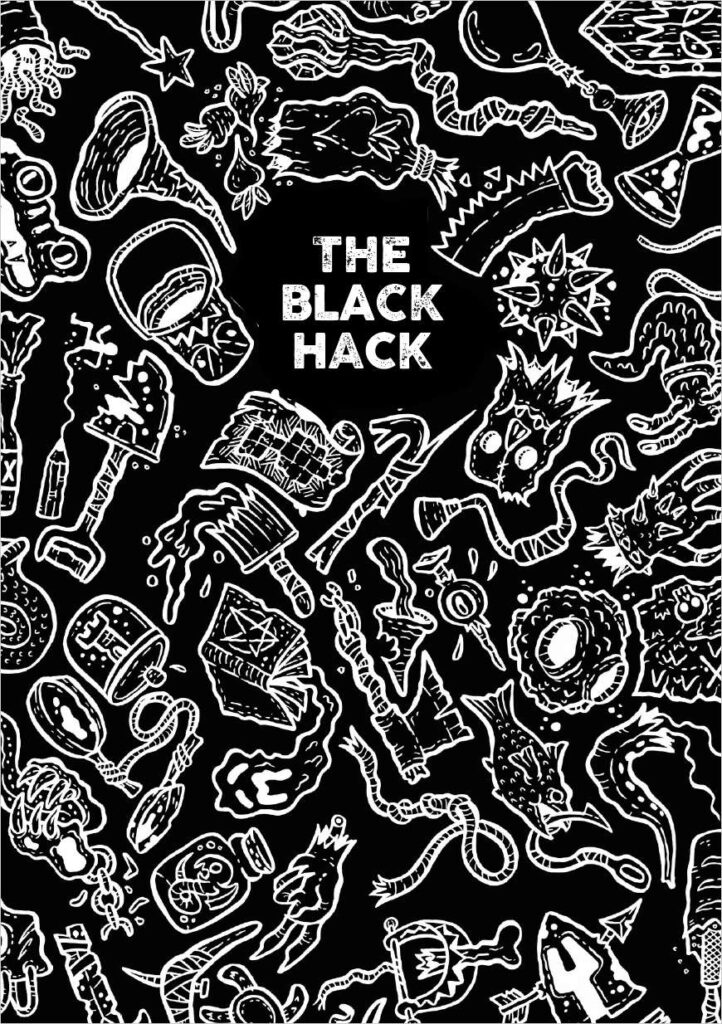I’m on a study project to improve my understanding of roleplaying games. To this end, I already have two reading projects, A Game Per Year and An Adventure Per Year. This is the third, with the goal of reading or playing 52 games made in the last few years. Originally I considered making this “A New RPG Per Week” and that’s where the number 52 comes from, even though a weekly schedule is probably not within my abilities.

The Black Hack is one of the best known simple, fast to use OSR games out there. I read the 2nd edition which came out in 2018. Like OSR games often are, it’s a variation on the original Dungeons & Dragons ruleset from the Seventies. The scene has existed long enough that it has developed a culture of its own that goes way beyond its original inspiration. Although the base is the same, there’s a lot of clever mechanical innovation in The Black Hack designed to make that core experience of deadly dungeon crawling run smoother.
I’ve started to think there’s a dichotomy in the writing that is published in roleplaying game books between “design writing” and “evocative writing”. Both have their uses. You can write to engage the imagination, bringing to life cool new ideas that will be used by people playing the game. You can get them fired up about the fiction and want to see themselves in it.
In contrast, the purpose of design writing is to communicate the design you have created cleanly and effectively so that the reader understands how to use it.
Many roleplaying game books use both, one to inspire and the other to communicate game mechanical function. The Black Hack is very strongly tilted towards design writing. It’s all about sparsely communicating how to use its mechanics, especially the tweaks it makes to the baseline OSR model. Any setting ideas that might appear on the page have been cribbed from D&D or Warhammer.
The big difference to baseline old school D&D is that the players handle more of the rolls. When an enemy attacks, you roll to defend instead of suffering the results of the GM’s attack roll.
Other ideas are a hit location schematic that asks you to roll dice on a picture on the page. If the die rolls onto an arm, an arm is hit. This method is also used for a treasure table. Initiative works so that you figure out who goes first, you or the enemy, but you can decide on the order of actions on the player side freely.
The game also provides a protocol for the GM to follow when running the game, attempting to give clear mechanical instructions on how to keep the action flowing moment to moment. In a game like this, a lot of the design is in the monsters, so there’s a selection of enemies described in terms of combat encounters, each with a few design tweaks of their own.
The game makes a few gestures towards a setting with its tables and guidelines for creating dungeons and adventures. It feels like a deadly dark fantasy world with some scifi elements. This aesthetic is familiar from other OSR releases as well.